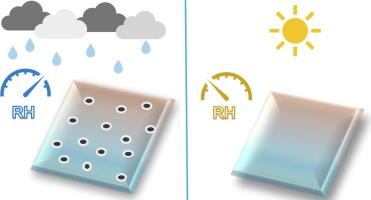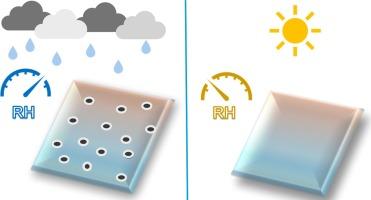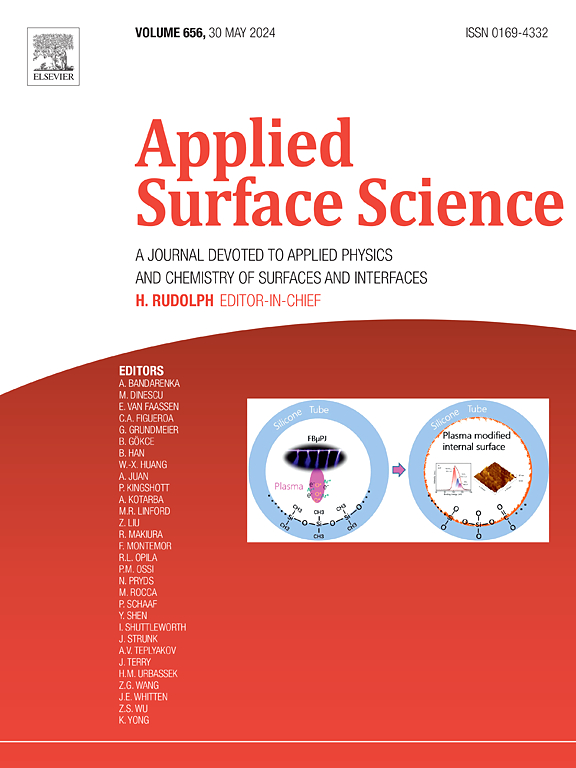Humidity modulated surface pattering of large-scale molecular ferroelectric thin films based on natural alkaloids
IF 6.3
2区 材料科学
Q2 CHEMISTRY, PHYSICAL
引用次数: 0
Abstract
Molecular ferroelectrics with low power consumption offer environmental and economic advantages over conventional ferroelectrics and could lead to next-generation microelectronic devices. To this end, it is of great importance to understand the conditions under which molecules can be engineered to form large-area, highly oriented thin films, as their electrical properties depend on orientation. In the research field of molecular ferroelectrics, homochiral multifunctional organic molecules are often used to induce the self-assembly of molecules through non-covalent interactions to form polar crystal packings and consequently ferroelectric properties. Here, molecular ferroelectric thin films based on the natural Cinchona alkaloid, cinchoninium cation and chlorocobaltate(II) anion were prepared by a dip-coating technique without post-thermal treatment and assisted stabilization process. The deposition parameters (relative humidity, temperature, concentration and withdrawal speed) were modified to produce either completely dense or fully patterned films with randomly distributed holes on the surfaces. While non-covalent interactions are the main factor in determining the structure of cinchoninium-trichloro-cobalt(II) thin films, relative humidity is a key parameter in the simultaneous self-organization happening at the mesoscale, acting as a dewetting agent. Dense cinchoninium-trichloro-cobalt(II) films exhibit a stable ferroelectric switching at a low operating voltage, and patterned films were tested as resistive methanol sensors.


基于天然生物碱的大规模分子铁电薄膜的湿度调制表面图案化
与传统铁电材料相比,低功耗的分子铁电材料具有环境和经济方面的优势,可用于制造下一代微电子器件。为此,了解分子在何种条件下可形成大面积、高取向性薄膜具有重要意义,因为分子的电学特性取决于取向。在分子铁电研究领域,同手性多功能有机分子经常被用来通过非共价相互作用诱导分子自组装,形成极性晶体包,进而形成铁电特性。本文采用浸涂技术制备了基于天然金鸡纳生物碱、金鸡纳阳离子和氯钴酸盐(II)阴离子的分子铁电薄膜,无需后热处理和辅助稳定过程。通过改变沉积参数(相对湿度、温度、浓度和抽吸速度),可以制备出完全致密或完全图案化的薄膜,薄膜表面随机分布着小孔。非共价相互作用是决定金鸡纳铵-三氯化钴(II)薄膜结构的主要因素,而相对湿度则是同时在中尺度上发生自组织的关键参数,起着脱水剂的作用。致密的金鸡纳铵-三氯钴(II)薄膜在低工作电压下表现出稳定的铁电开关,并将图案化薄膜作为电阻式甲醇传感器进行了测试。
本文章由计算机程序翻译,如有差异,请以英文原文为准。
求助全文
约1分钟内获得全文
求助全文
来源期刊

Applied Surface Science
工程技术-材料科学:膜
CiteScore
12.50
自引率
7.50%
发文量
3393
审稿时长
67 days
期刊介绍:
Applied Surface Science covers topics contributing to a better understanding of surfaces, interfaces, nanostructures and their applications. The journal is concerned with scientific research on the atomic and molecular level of material properties determined with specific surface analytical techniques and/or computational methods, as well as the processing of such structures.
 求助内容:
求助内容: 应助结果提醒方式:
应助结果提醒方式:


